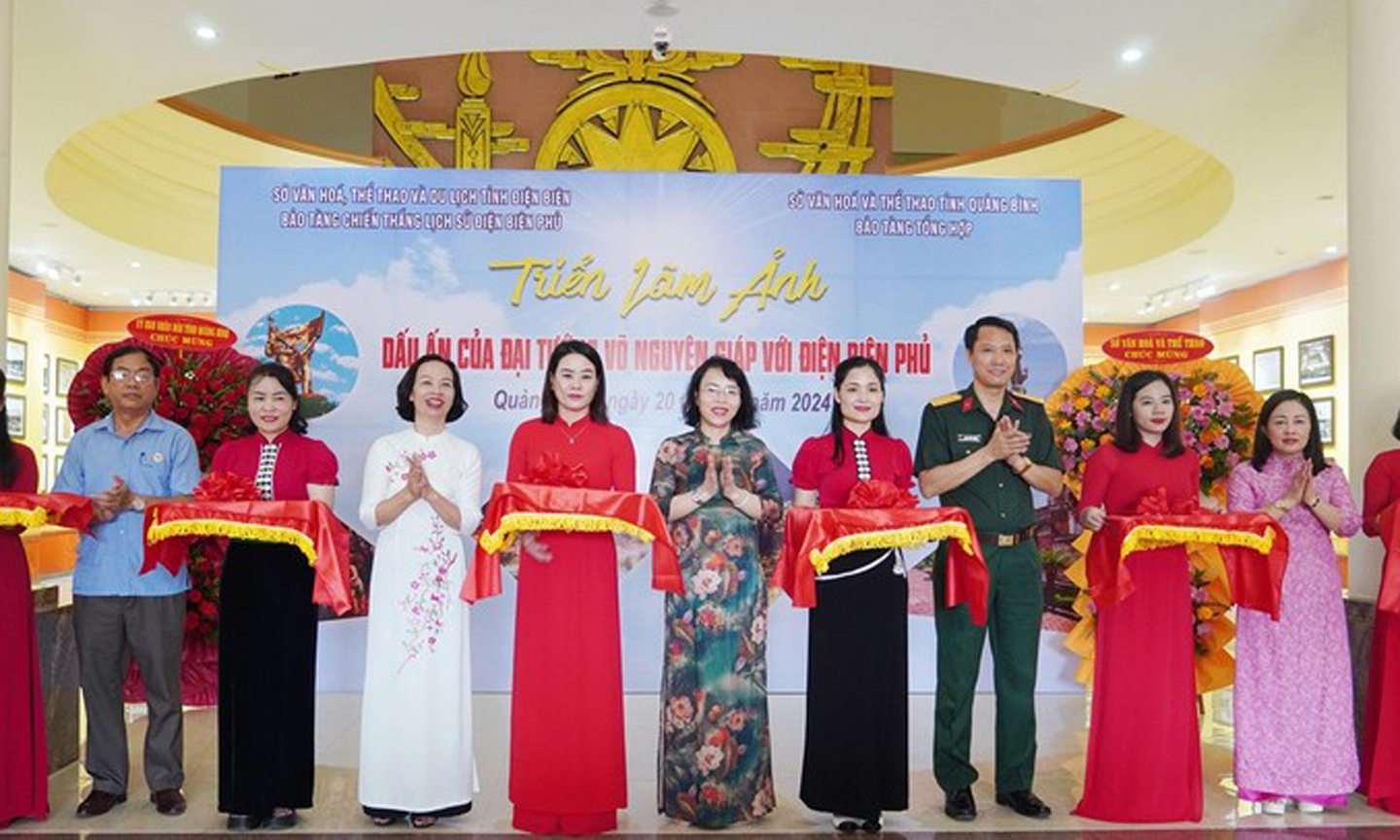Photo exhibition on General Vo Nguyen Giap opens in Quang Binh
ABO/NDO- A photo exhibition named “The Imprint of General Vo Nguyen Giap on Dien Bien Phu” opened in the central province of Quang Binh – the hometown of the General - on August 20.
This event aims to celebrate the 79th anniversary of the August Revolution (August 19, 1945 - 2024), the National Day (September 2, 1945 - 2024), and the 113th birth anniversary of the General (August 25, 1911 - 2024).
The exhibition showcases 103 photos, featuring the homeland and family of General Vo Nguyen Giap, the General, and the Dien Bien Phu Campaign (May 7, 1954), and the sentiments of the Dien Bien people towards the General.
 |
| The photo exhibition “The Imprint of General Vo Nguyen Giap on Dien Bien Phu” opens in Quang Binh province on August 20 (Photo: baoquangbinh). |
The exhibits introduce the significant contributions, directions, and strategic decisions of the General as the Commander-in-Chief of the Vietnam People’s Army during the struggle against the French colonialists, particularly the Dien Bien Phu Campaign.
The exhibition will remain open to visitors until the end of September 20.
General Giap, whose real name is Vo Giap, was born in Loc Thuy commune in Le Thuy district, the central province of Quang Binh, on August 25, 1911. He was the commander of the Dien Bien Phu Campaign which went down in history as a glorious milestone of the entire Vietnamese Party, army, and people in the resistance war against the French colonialists (1945 - 1954).
The Dien Bien Phu Victory that “resounded across the five continents and shook the globe” forced the French colonialists to sit down at the negotiation table to discuss and sign the Geneva Accords on ending the war and restoring peace in Indochina in July 1954. This put an end to the prolonged French colonial rule and heralded a new stage for the revolution in Indochina.
(Source: NDO)
 về đầu trang
về đầu trang







